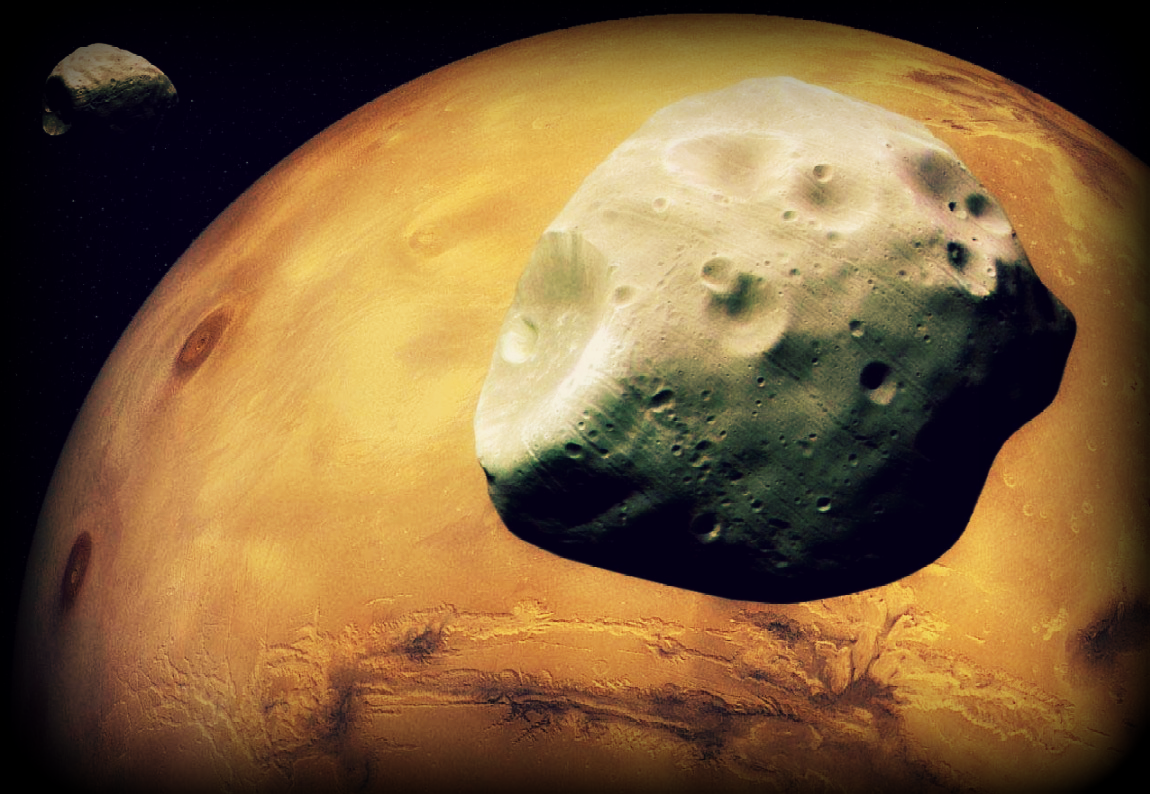







Mars has 2 moons: Fobos and Deimos. The are small and have irregular shapes. They are probably intercepted planetoids or the were formed form matter ejected from Mars.
22,2 km |
DIAMETER |
12,6 km |
10,8 x 1015 kg |
MASS |
1,8 x 1015 kg |
9 377 km |
DISTANCE from MARS |
23 436 km |
1 900 kg/m3 |
DENSITY |
1750 kg/m3 |
0,32 |
PERIOD |
1,26 |
18 VIII 1977 |
DATE of DISCOVERY |
12 VIII 1977 |
 Is the only moon in the Solar System that is located in such close proximity to it's planet. This makes it's revolution incredibly fast. In 1 Martian day it circles the planet 3 times!
Is the only moon in the Solar System that is located in such close proximity to it's planet. This makes it's revolution incredibly fast. In 1 Martian day it circles the planet 3 times!The surface of the moon is sown with many craters. The biggest: Stickney crater has 10 km in diameter - Nearly half of Fobos's diameter. An oddity is a ruptures located around the crater. It was thought that they formed as a result of impact which formed the crater. Today NASA scientists say that the ruptures are are structural damage which will in the end lead to Fobos disintegrating. The cause to this is the gravitational force of Mars which pulls the moon closer to the planet 2m every 100 years. It is estimated the moon will break apart in 30 - 50 mln years. |
 It is Mars's second moon with a more regular shape. Craters are also numerous with the biggest only 2,3km in diameter (1/5 of the mean diameter of the moon).
It is Mars's second moon with a more regular shape. Craters are also numerous with the biggest only 2,3km in diameter (1/5 of the mean diameter of the moon).A characteristic that differentiates Deimos from Fobos is it's smoothness. This is the result of dust which covers the craters (it is estimated that the thickness of this layer is about 50 m). During impacts the dust hovers over the surface because of the small gravitational pull. Furthermore, the Mars's gravity makes a belt of dust form around the moons orbit; the dust returns to the moon as it rotates. |